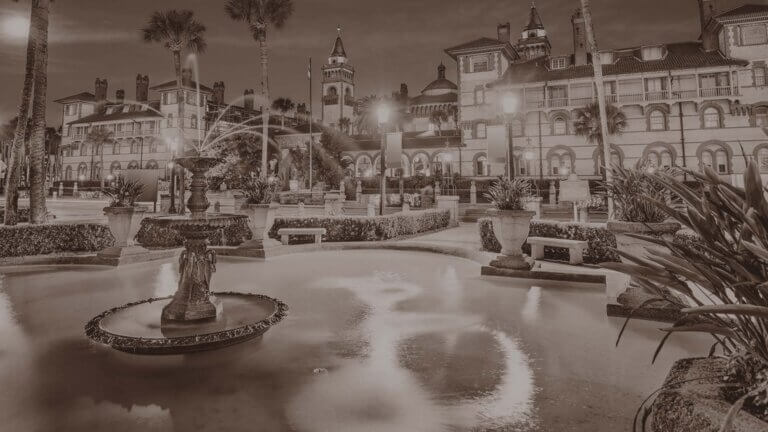

St. Augustine, Florida, is a city full of rich history, fascinating stories and unique charm. As the oldest European-established settlement in the continental U.S., it’s a place where every corner has a story. Whether you’re exploring historical landmarks or diving into quirky local tales, there are plenty of unique facts about St. Augustine waiting to be discovered. Let’s explore some of the city’s most fascinating and occasionally strange details.
St. Augustine, a captivating city steeped in history, was founded in 1565 by the Spanish explorer Pedro Menéndez de Avilés, marking it as the first permanent European settlement in Florida. While other early settlements in the region were ephemeral, St. Augustine has persisted, standing as a testament to its enduring legacy.
The city has weathered the storms of time, including invasions, conflicts, and cultural shifts. Yet, its Spanish heritage remains a vibrant thread woven into the fabric of its identity. The city’s architecture, a harmonious blend of Spanish Colonial and Mediterranean Revival styles, reflects its rich past. The cobblestone streets, historic forts and majestic cathedrals transport visitors back to a bygone era.
One of the many unique facts about St. Augustine is its claim to being the oldest continuously inhabited European settlement in the continental United States. This historical significance, coupled with its captivating beauty, makes St. Augustine a popular destination for history buffs, culture enthusiasts, and those seeking a glimpse into the past.
Unlike many early American colonies, which were short-lived ventures, St. Augustine has maintained a continuous human presence since the 1500s. This remarkable longevity makes it the oldest continuously inhabited European settlement in the United States. As you wander through the city’s historic streets, you can witness the harmonious blend of the past and present, offering visitors a unique glimpse into the lives of early settlers.
One of the many unique facts about St. Augustine is its captivating history and enduring legacy. The city’s cobblestone streets, historic forts and majestic cathedrals serve as tangible reminders of its rich past. By exploring these historic sites, visitors can gain a deeper understanding of the challenges and triumphs of those who came before them.
If you’re looking for more strange facts about St. Augustine, Treasury Street is officially the narrowest street in the United States. At just 7 feet wide, it originally connected the Royal Spanish Treasury to the docks. Some say the street was designed this way to make it harder for thieves to make a quick escape with stolen treasure. It’s one of those interesting oddities that makes a stroll through St. Augustine even more fun.
The Fountain of Youth Archaeological Park is another must-visit in St. Augustine. One of the unique facts about St. Augustine is that the archaeological park is believed to be the site where Juan Ponce de León landed in Florida in 1513 while searching for the mythical Fountain of Youth. Today, the park offers interactive exhibits, lush gardens, and even a chance to drink from the legendary spring — whether or not it grants eternal youth is up to you.
The Fountain of Youth Archaeological Park allows visitors to step back in time and explore the history and mythology surrounding this iconic figure. As you wander through the park’s serene gardens, you can imagine the hopes and dreams of those who sought the elixir of eternal life.
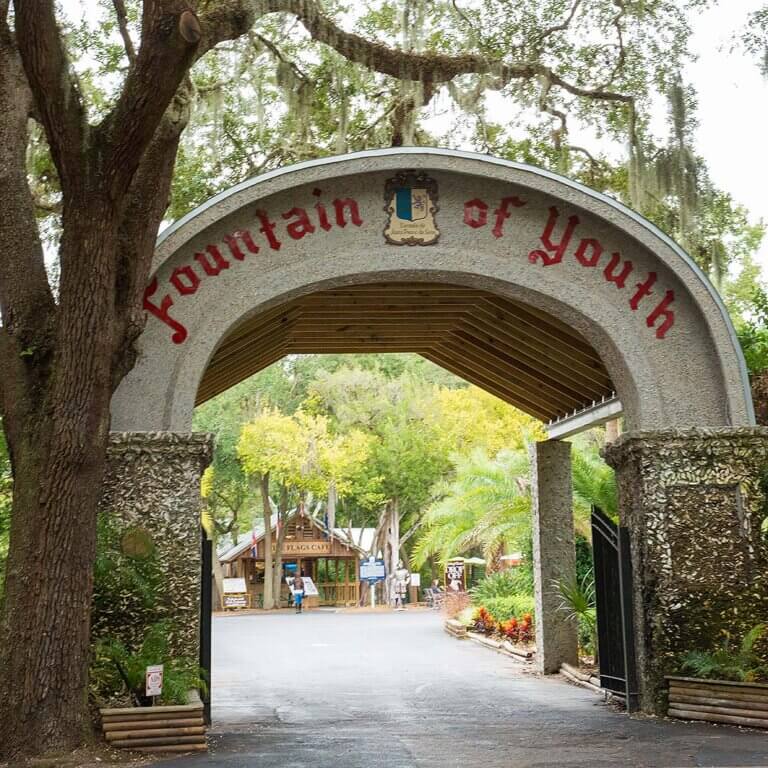
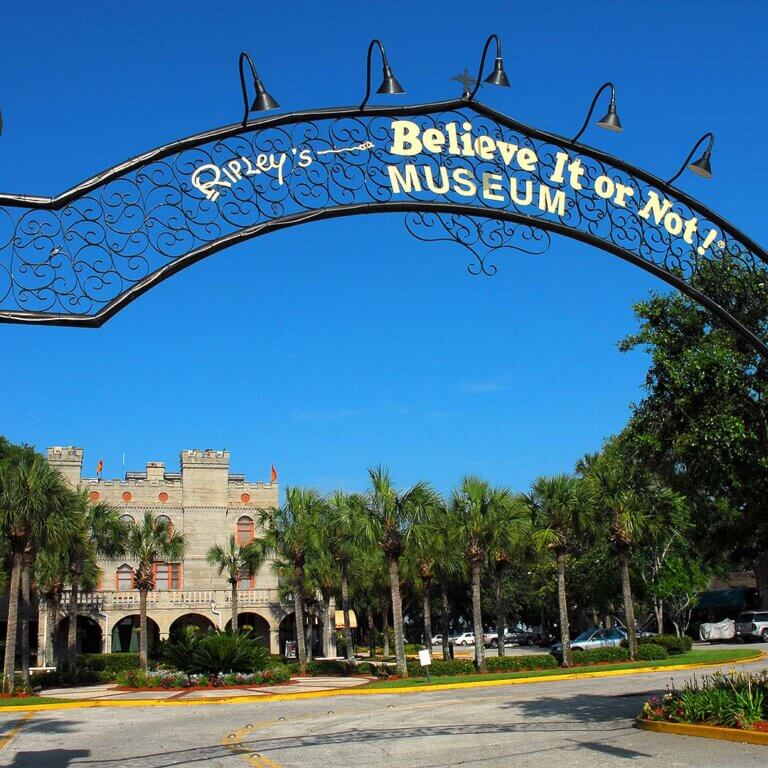
For something a bit more quirky, check out the world’s oldest Ripley’s Believe It or Not! museum, located in a historic mansion in St. Augustine. Since 1950, it has been home to some of the strangest and most bizarre exhibits you’ll ever see, from shrunken heads to strange artifacts. It’s a fun and unusual stop for anyone looking to explore the city’s weirder side.
The Castillo de San Marcos is full of unique facts about St. Augustine. Built in the late 1600s by the Spanish, Castillo de San Marcos is the oldest masonry fort in North America. Constructed from coquina stone, a unique local material made from compressed shells, the fort has withstood the test of time, enduring battles and storms. Exploring the fort offers breathtaking views of Matanzas Bay and a captivating glimpse into the military history of the colonial period.
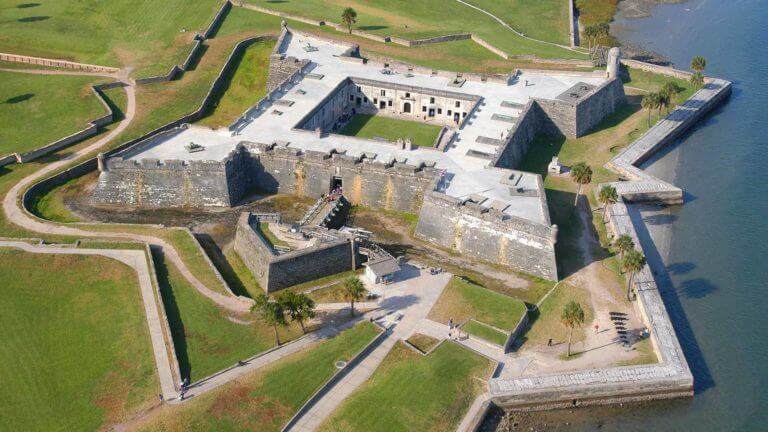
This massive fort played a crucial role in defending the city from attacks by pirates, Native American tribes, and other European powers. Visitors can wander through the fort’s labyrinthine tunnels, climb its towering walls and imagine the lives of the soldiers who once guarded its ramparts. The fort’s thick walls and strategic design offer a testament to the ingenuity and resilience of its builders.
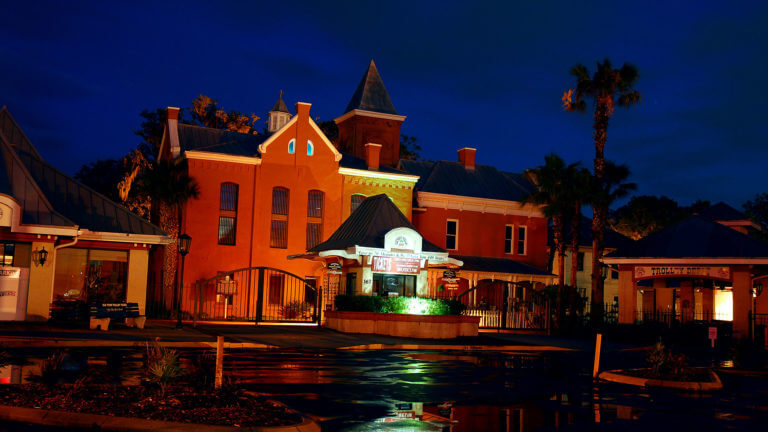
St. Augustine’s Old Jail Museum is more than just a building — it’s a window into the city’s past. Built in 1891, it served as the county jail until 1953. Visitors can embark on guided tours to delve into its notorious history, learning about the harsh conditions endured by its prisoners and the captivating tales of those who were incarcerated within its walls.
It’s full of unique facts about St. Augustine’s history. Beyond its historical significance, the jail is said to be haunted by the spirits of former inmates and guards. Many visitors and tour guides have reported strange occurrences, unexplained noises, and eerie sensations, adding a touch of mystery to this already fascinating site. Braver visitors can even take the Old Jail After Dark Tour, which gives guests access to top-of-the-line ghost-hunting equipment and allows them to see for themselves if the site is haunted. Whether you believe in the paranormal or not, the Old Jail and the Old Jail After Dark offer a chilling and unforgettable experience.
St. Augustine’s strategic location made it a prime target for pirates. Its proximity to the Caribbean, a hotbed of piracy, and its role as a port city for Spanish treasure fleets made it an irresistible temptation for buccaneers. The city’s fortifications, including the Castillo de San Marcos, were often tested by these seafaring rogues. While the Spanish made efforts to protect their city and its treasures, pirates like Sir Francis Drake and Blackbeard continued to pose a threat. Today, the city’s pirate history is celebrated, and visitors can learn about these infamous figures and their impact on St. Augustine’s past.
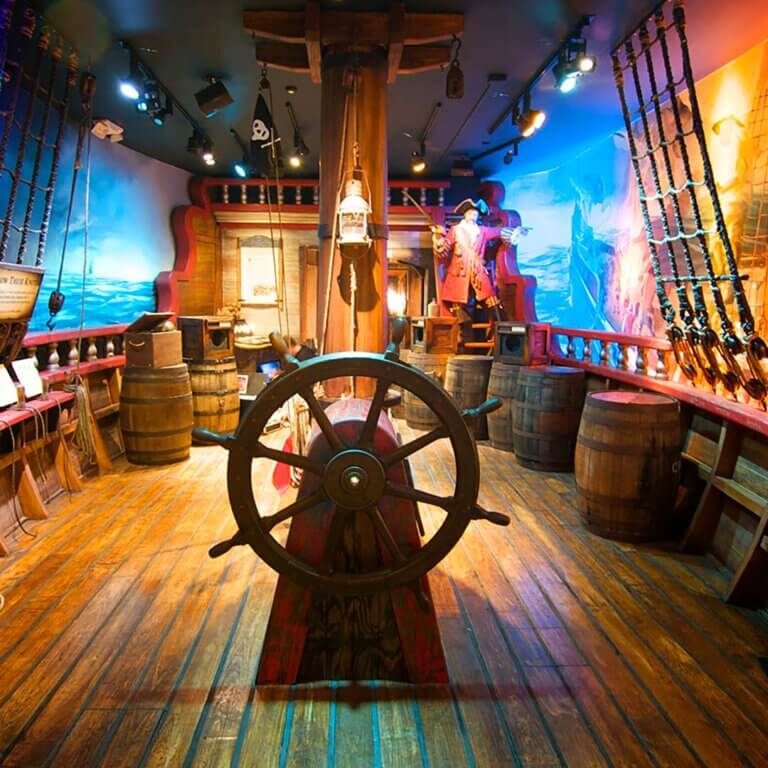
The connection to pirate history is undoubtedly one of the most unique facts about St. Augustine, and nowhere is that more evident than at the St. Augustine Pirate & Treasure Museum. This isn’t just a kitschy pirate-themed attraction; it’s filled with real artifacts from the Golden Age of Piracy, including the only confirmed pirate treasure chest in the world. If you’ve ever wondered what life was like for real pirates, this museum is the place to find out.
St. Augustine is known for its history, but it’s also famous for its strange and mysterious stories. From local legends of hidden treasure to tales of ghostly apparitions, here are a few of the stranger things about St. Augustine that continue to captivate visitors.
According to local folklore, there’s a deep hole somewhere in St. Augustine where a massive alligator supposedly lurks. Although no one has ever seen the gator, the legend persists, adding a bit of mystery to the area’s landscape.
Rumor has it that St. Augustine is hiding buried pirate treasure within the city’s boundaries. Treasure hunters have searched for it for years, but no one has found it yet. The mystery keeps people intrigued, hoping that one day they’ll be the ones to strike gold.
Some locals believe that there’s an alleyway in St. Augustine where, if you step into it at just the right moment, you could find yourself in another time period. Whether it’s true or not, this urban legend certainly adds a touch of magic to the city.
According to legend, a cursed Spanish galleon, packed with gold, was caught in a storm off the coast of St. Augustine and never seen again. Some say the ship’s wreckage is still out there, lost to the sea and shrouded in mystery.
The St. Augustine Lighthouse isn’t just a beautiful landmark — it’s also one of the city’s most haunted spots. Visitors and staff have reported seeing ghostly figures, hearing strange noises and feeling a chilling presence at the top of the lighthouse. Whether you believe in ghosts or not, it’s a story that makes visiting this historic site a bit more thrilling.
Over the years, there have been reports of mermaids spotted off the coast of St. Augustine. While skeptics might say these are simply marine animals or mirages, others believe there’s something more mysterious at play. It’s one of those strange things about St. Augustine that keeps the imagination running wild.
The Old Drug Store is steeped in history and a touch of the supernatural. Built upon an ancient indigenous burial ground, this site has become notorious for reported ghost sightings. Once a bustling pharmacy and general store, where the owners would perform amateur embalmings at night, the Old Drug Store is now said to be haunted by the spirit of an old Tolomato and the restless souls of those mishandled bodies. The Ghosts & Gravestones Tour takes guests inside after dark and includes even more chilling tales.
Exploring the Castillo de San Marcos, taking a ghost tour at the Old Jail Museum and visiting the St. Augustine Pirate & Treasure Museum are just a few fun activities. For something quirky, you can also visit Ripley’s Believe It or Not! for a dose of the strange and unusual.
One of the most infamous criminals connected to St. Augustine’s past is Joe Perry, a notorious figure housed at the Old Jail. The jail housed many other criminals over the years, but Perry remains one of the most talked about due to the violent crimes he committed. His legacy is still discussed during tours of the jail.